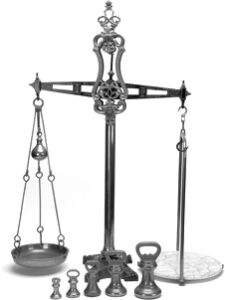What Does Legal for Trade Mean?
Legal for trade: Weighing up the requirements
In all commercial applications where product is sold by weight, it is a legal requirement that weighing equipment must be verified as ‘legal for trade’ or ‘trade approved’. In summary, this means that the equipment (from an individual scale to a complete pre-pack line) has undergone a stringent set of tests to ensure it is sufficiently accurate and fit for purpose.
Thus, if a trade approved unit undergoes any alteration or repair, it will require re-verification. This is to ensure that the approval remains valid.
The following list provides examples of typical applications where a legal-for-trade scale might be required:
- Determination of mass for commercial transactions.
- Determination of mass for the calculation of a toll, tariff, tax, bonus, penalty, remuneration, indemnity or similar type of payment.
- Determination of mass for the application of laws or regulations; expert opinion given in court proceedings.
- Determination of mass in the practice of medicine for weighing patients for the purposes of monitoring, diagnosis and medical treatment.
- Determination of mass for making up medicines on prescription in a pharmacy and determination of mass in analyses carried out in medical and pharmaceutical laboratories.
- Determination of price on the basis of mass for the purposes of direct sales to the public and the making-up of pre-packages.

Who governs this law?
Global:
Weights and measures authorities around the world are responsible for controlling legal for trade equipment and related legislation. Therefore, most countries globally (outside of the USA) have adopted International Organization of Legal Metrology (OIML) requirements for weighing equipment. In fact, OIML has developed a set of international guidelines relating to the manufacture and use of weighing and measuring instruments for legal metrology applications.
UK specific:
In the UK, Automatic checkweighers are not prescribed and do not have to be verified before they can be used for average weight. The owner of the instrument must always be able to show however that they are suitable for their use. The law relating to the average weight of packages is the responsibility of the local weights and measures department. Indeed, they work under NMO guidelines. In fact, the rationale for regulating equipment is that the accuracy of quantity for a large number of individual transactions can be guaranteed by ensuring the accuracy of the equipment making the measure. This is normally applicable to pre-pack lines.
European Community (EC) specific:
Countries within the EC are generally required to adopt the harmonised European Directives for CE compliance. This includes those relating to “prescribed weighing instruments.”
In the EC weighing instruments are split into two categories: Automatic Weighing Instruments (AWI) and Non-Automatic Weighing Instruments (NAWI). The main difference between the two being that a NAWI requires the intervention of an operator during the weighing process to adjust the quantity of material being weighed. NAWIs are certified under the EC Non-Automatic Weighing Instruments Directive. Meanwhile, most AWIs fall within the remit of the EC Measuring Instruments (MID) directive.
Who can certify a product as legal for trade?
This certification can only be given by a weights and measures inspector or an ‘approved qualifier’. In fact, an appropriate approved body must evaluate the design and operation of the equipment. This is to ensure that it conforms to the published guidelines/ requirements. It is also an offence to have, or use, seriously incorrect equipment or to alter equipment that is incorrect after it has been stamped.
Useful links:
International Organization of Legal Metrology (Global)
https://www.oiml.org/en/about/legal-metrology/trade
National Measurement Office – Weights and Measures legislation (UK)
www.bis.gov.uk/nmo/regulation/weights-and-measures-legislation
UK Weighing Federation
*Disclaimer: This document is intended to provide a basic introduction, it is by no means an exhaustive explanation of the regulations and should not be used as such. Those needing to fully understand the how the law impacts upon their business should refer to the links outlined in the ‘useful links’ section of this page, or speak to one of our sales representatives

 United States
United States  Canada
Canada  Canada (fr)
Canada (fr)  India
India  Malaysia
Malaysia  Ireland
Ireland